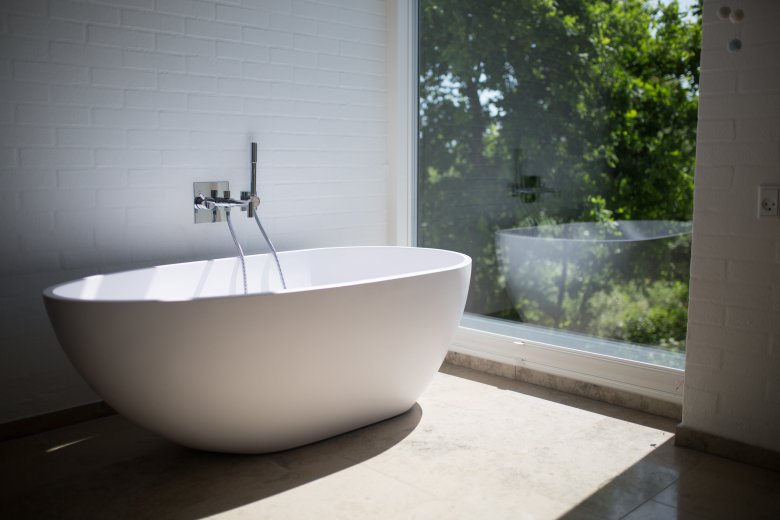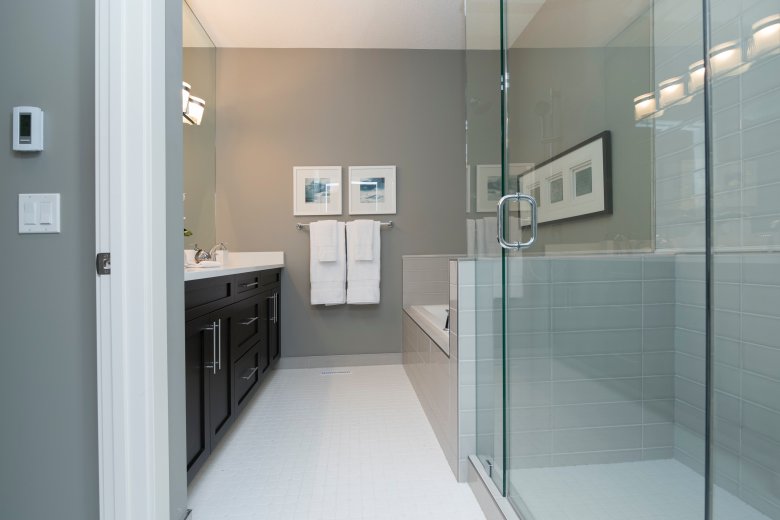- April 26, 2024

Many people are primarily concerned about how to furnish their bathroom when it is ready to use. However, we forget that there are much more important issues concerning its finishing. First of all, it is about what materials we should use to finish the walls and floors. Properly selected will allow us to enjoy not only a nice bathroom, but also a room resistant to water, which in this particular case is extremely important.
It should be remembered that in the case of bathrooms we should think very carefully about the use of individual materials. Due to the high humidity of the air in this room, it is necessary to pay attention to their hygroscopicity. What principles do we have to follow to make our bathroom not only look great, but also practical and functional? Here are a few hints that may clarify some of the key issues. How do I finish the walls in the bathroom? Since the conditions in the bathroom are quite unique, we must remember not to use the same materials that we use to finish the rest of the rooms. We can definitely not choose gypsum plasters, which are characterized by high hygroscopicity, and therefore show a high susceptibility to absorption of water and steam. If used in a bathroom, they would quickly lose their mechanical strength, so it is better to use cement plaster or cement-lime plaster. Walls that need to be aligned can be finished with plasterboards, which are mounted on a metal grate. Unfortunately, we have to take into account the fact that such a solution will slightly reduce our bathroom. If the walls are level, such waterproof panels can only be installed using mortar. When they are ready, it is enough to cover them with stone slabs, wood or glaze. If we decide to place ceramic or stone tiles in our bathroom we can do it on the entire surface of the walls and on the floor. However, many people choose to place them only on those parts of the wall that are particularly exposed to moisture every day, i.e. around washbasins, bathtubs or shower cubicles. In this case, the surface without glaze can be painted with paint for walls, although it is best to choose the one intended for bathrooms.
Waterproof paints with a putty compound or wallpaper made of glass fibre, which have been treated with fungicides, are also becoming more and more popular. It is a great alternative for people who do not want to cover the walls with any kind of glaze.

Wooden floor in the bathroom
It has been assumed that bathroom floors must be covered with ceramic or stone tiles. It turns out, however, that we can easily bet on wood in the bathroom as well. Of course, the floor must be made of a suitable type of wood, which will be resistant to moisture and frequent temperature changes. Such species are, for example, oak, merbau, iroko or tek. Wooden floors must also be protected from frequently spilled water, so they can be covered with polyurethane, urethane or urethane-alkydate varnish. Cleaning such a floor consists mainly in rubbing it with a damp cloth with the addition of cleaning agents recommended by the manufacturer of a specific lacquer. Unfortunately, the only disadvantage of varnished wooden floors is that they are extremely slippery after spilling water. Less problems of this type are caused by oiled floors, which, however, need to be properly maintained with maintenance oil, at least twice a year.
During the renovation of the bathroom we may also come across another problem, which is uneven flooring. These small, up to one centimetre, can be levelled out by using a cement-based self-levelling compound, which is applied to the cleaned and primed floor. If the curvature turns out to be much greater, the use of a normal undercoat mortar remains.
The use of optical tricks in the bathroom
Sometimes small changes in the appearance of the bathroom make it look much more attractive, so it is certainly worthwhile to learn some optical tricks that will enable us to do so. If the bathroom is not too big, remember that it will look bigger if you can see as much flooring as possible from the threshold. Therefore, suspended furniture or just the right placement of the equipment can be used. The effect of enlarging the bathroom space will also be achieved by using cooler colours such as white, grey, blue or chocolate brown. It is also worthwhile to introduce light-reflecting materials and large tiles with narrow joints to the bathroom. In addition, rectangular tiles placed horizontally will widen the interior, and those placed vertically will increase it. Our bathroom will also seem a little deeper if you will find a wallpaper or just photographs in it. But don't exaggerate with patterns, because too many of them will unnecessarily tighten up our bathroom.